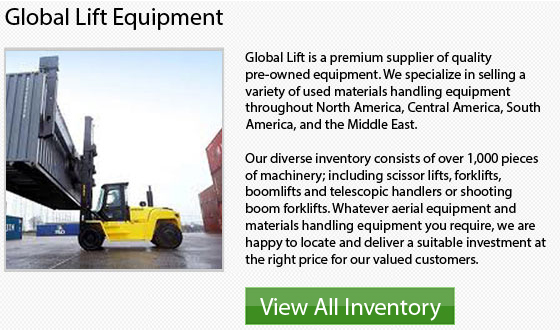
Below are add-ons that are useful for narrow aisle lift trucks:
Side shift: Side shift is an option that allows the lateral movement of the load without having to move the unit. This allows loads to be positioned with a lot more accuracy.
Tilt mast: The tilt mast option enables the forks to shift forwards and backwards. This is great in situations where loads aren't entirely level. To be able to gain greater stability while transporting a loaded truck, the mast can be tilted back.
Extendable forks: The option of extendable forks helps the "reach" of the lift truck to extend for stacking pallets one in front of the other, known as "double-deep" loading.
Operator platforms: Several NA lift trucks have operator platforms that could lower and raise the operator while simultaneously lowering and raising the forklifts forks. This offers optimum control and visibility while dealing with loads at heights of 6 m to 9 m.
Forklift on a Ramp
Operators need to be correctly taught and must be tested and licensed. It is vital for anybody using a forklift to be knowledgeable regarding safety regulations and problems. Drivers should understand how to adjust on uneven surfaces or in cases where the load weight changes the center of gravity. Safety measures cover safely utilizing a lift truck on a ramp, that is always happening as the operator will normally need to drive down and up ramps in order to unload and load containers.
Guidelines for Using a Lift Truck on a Ramp
1 When approaching and driving up and down the ramp, drive slowly. The risk of mishaps is higher while driving fast because this could upset the machine's center of gravity.
2 Drive the lift truck in reverse while moving up an incline on a ramp when not carrying a load.
3 Drive forward while moving down an incline on the ramp with no load.
4 Tilt the forks a little back to shift the center of the load to the equipment's front, when moving down or up a ramp while carrying a load.
5 Drive forward up a ramp while carrying a load in order to make the load more steady.